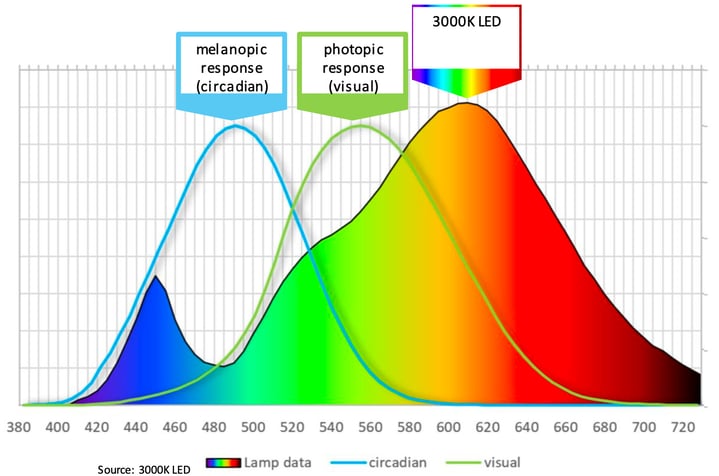Circadian Lighting Control
At BubblyNet, we develop the functionalities to control and optimize circadian lighting
Luminaire Settings

Scheduling
The Circadian Rhythm, once saved as a scene, can be included in the schedule of either an area of the building or the overall site.

Configure Rhythm
Follow the instructions in the video to configure the desired Circadian Rhythm dynamic control. The configuration card allows setting intensity & CCT for all the states. Time can be selected based on legal time or 5 astronomical events (dawn, sunrise, zenith, sunset, dusk) with or without off sets.

Rhythm Card
The rhythm card is the graphic representation and summary of the final setting.

Visual Pathways
(Photoreceptors -> Rods + Cones)
Rods are responsible for motion and contrast Cones are responsible for color vision
They together receive information through eyes and send the Information to the brain as an image.

Non Visual Pathways
They are responsible for the expression of Melanopsin photopigment crucial for adaptation of mammals to their ambient light environment
They have a single photon response and then communicate to the part of the brain that regulates our circadian rhythms without creating any image.

Circadian Rhythm
Circadian rhythm are physical, mental, and behavioral changes that follow a 24-hour cycle. These natural processes respond primarily to light and dark and affect most living things, including animals, plants, and microbes.
A recent study found that collectively the expression of 43% of all protein-coding genes showed a circadian rhythmicity. (Zhang R, Lahens NF, Ballance HI, Hughes ME, Hogenesch JB. A circadian gene expression atlas in mammals: Implications for biology and medicine.)
These studies divided the light pathways in two different groups the visual pathways and the NON visual pathways.
A misalignment of the human circadian rhythm can generate multiple issues in the regulation of our body functions.
-
Increased likelihood of obesity (Roenneberg et al. 2012)
-
Increased addiction to nicotine and alcohol usage (Wittman et al. 2006)
-
Heightened danger of cardiovascular disease (Wong et al. 2015)
-
Increased likelihood of metabolic disease (Scheer et al. 2009)
-
Overall attenuation of circadian process (Jan-Dijk et al. 2012)
Social Jet Lag

Average Time Spent Indoors
Another study pointed out that Americans, on average, spend approximately 90 percent of their time indoors. (by Neil E. Klepeis and others, and published by the Lawrence Berkeley National Laboratory in 2001.)

Circadian Lighting
Normal light such as standard static LED stimulate just rods and cones, creating images. Circadian lighting provide stimulation to circadian rhythms with a melanopic response. It is really important to understand what is the melanopic ratio of the lights we use in our buildings. The melanotic ratio is the the ratio of melanopic response to the visual response for a given light source and CCT. Out of the total amount of Lux emitted from a fixture the EML indicates the equivalent melanopic Lux. To conform to the WELL Certification the fixture needs to have a minimum EML of 150.

Circadian lights instead have a peak in the blue spectrum at 490nm which stimulates our melanopic response simulating very well the sun light.
The technology allows to reduce the 490nm blue peak dimming down the LED.
Once the light is dimmed, for example following the weather and sunrise and sunset cycle, the blue peak would be removed.
The body not receiving any melanopic stimuli will stop producing cortisol and start producing melatonine resetting the circadian rhythms.

According to recent studies on office worker performance, individuals with the best possible view of natural light scored 10% to 25% better on measures of mental function and memory recall. Those with poor or no views (think high cubical partitions, severe glare, basement offices, etc.) reported increased tiredness and decreased overall performance speed. (Heschong, Lisa. Heschong Mahone Group. “Windows and Offices: A Study of Office Worker Performance and the Indoor Environment)
